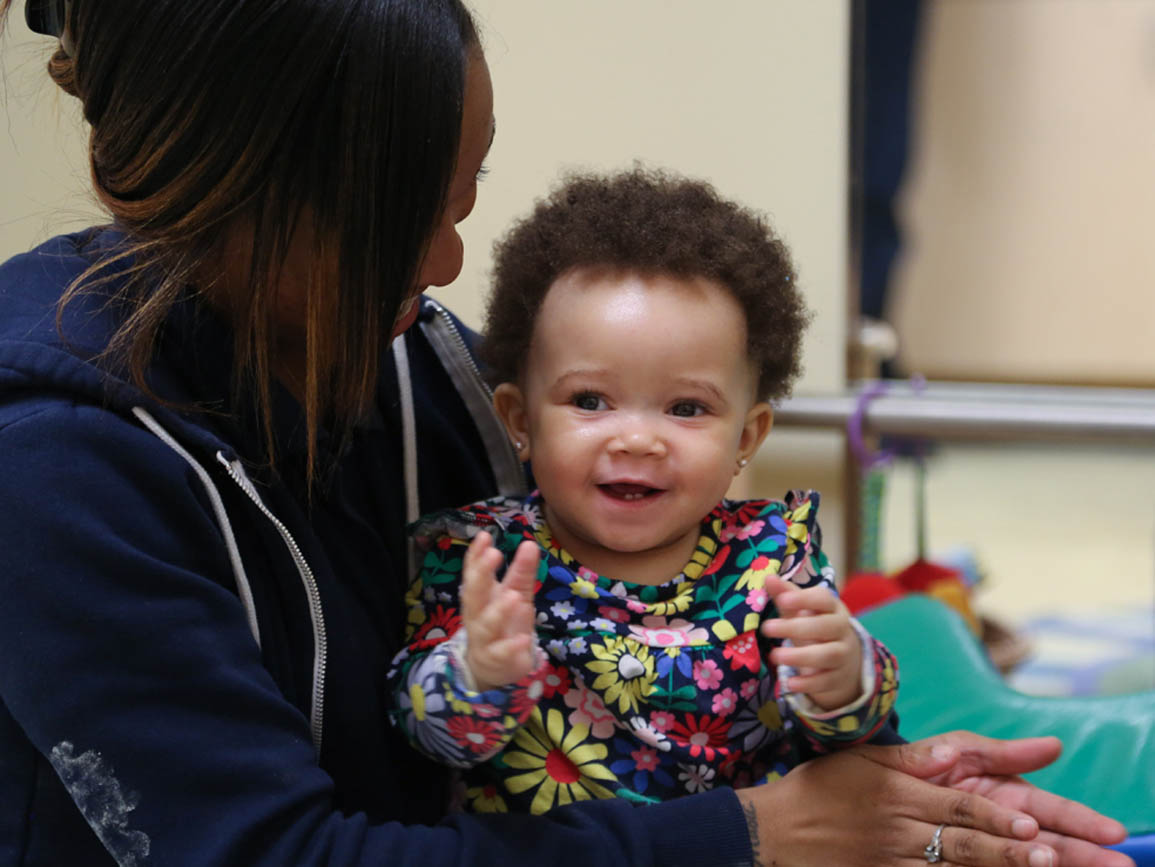At the supermarket, a restaurant, the doctor’s office, or in traffic, it seems we spend much of our time waiting. In fact, many estimates indicate that people spend 2-3 years of their life waiting in lines. That time can feel frustratingly long and boring when you’re by yourself, but with children in tow, it can feel endless. There’s nothing like a long wait to bring out behaviors we find challenging. With a bit of forethought and preparation, waiting times with children can be transformed from moments of stress into moments of learning and laughter.
Tips on how to build patience
Adjust everyone's expectation, adults and children alike:
- A trip to the grocery store with a young child is going to take longer than one on your own. You’re less likely to have a long, adult conversation at a restaurant with a toddler. Accepting these realities ahead of time helps you be more tolerant and flexible during the experience. Because young children’s concept of time and their abilities to control their emotions aren’t fully developed, there are going to be times when their feelings simply overwhelm them. But that doesn’t mean they have to overwhelm you. If you use these moments to help build skills, you will have fewer challenges in the future.
- Helping children manage their expectations is an effective meltdown avoidance technique as well as an important lifelong skill. The drive to the store is an opportune time to discuss expectations and ground rules. Saying things like “I am not going to buy anything in the store today that is not on my list” or “I will buy you one snack: an apple or carrots. Which one would you like?” before you enter the store will limit (not necessarily eliminate) the number of last-minute requests you must handle in the checkout lane.
Teach children how to be patient. Knowing how to delay gratification and build self-control are essential life skills that will help your child build patience and successfully navigate many life events. Even though we don’t relish it, being able to wait is an important ability and one you should both model for and promote in your child. One simple way to do this is to keep a clipboard, paper, and pencil (colored pencils are even better) on hand. Hand it to your children when you to any store and they can write or draw the things they see that they want. Creating a list satisfies their immediate desire for something as well as allows them to practice planning and thinking ahead. Instead of a tantrum in the checkout aisle, they can share their lists with you.
Don't rely on technology. Often, adults are handing their tablets and cell phones to young children to keep them entertained during waiting times. While this can be helpful in the moment, it may backfire in the long run. First, experts strongly advise against children under 18 months-old using devices with screens since there is some evidence it adversely affects development and no evidence that it enhances development. Second, children who are constantly entertained by technology are missing opportunities to learn how to entertain themselves, develop communication skills, build sustained focus, and expand their interests. There are many more fruitful ways to spend these waiting moments instead.
Be prepared with waiting activities. One of the best strategies is to have a bag of safe, age-appropriate toys for waiting occasions. You should only allow the bag (and its contents) to be used during waiting times, so it feels exciting and special. There is no need to spend a lot on bag items: pipe cleaners, decks of cards, toys that come as prizes with other purchases, uniquely colored crayons and paper, bubbles, play dough, or even mismatched toy pieces (e.g. half of an action figure duo) do the trick. Soon, children will look forward to waiting.
Turn waiting time into quality time. In addition to dreading waiting in lines, parents are often collectively bemoaning the lack of quality time they have with their children. At Bright Horizons, we call these prime times: routine experiences that offer unexpected, meaningful opportunities for relationship building and learning. So, why not turn “line” time into fun and games (with a little learning thrown in)? If you are prepared, you can magically make waiting time much easier for most of the time.
How to make waiting in line fun
Try these activities to make waiting in line fun and educational:
Infant waiting activities: Waiting is not a skill infants can do well or should even be expected to do well. For times you can’t avoid waiting with an infant, it's great to have some ideas.
- Sensory items are often captivating: a sampler of textured materials (cut up or purchase fabric swatches and put them on a book ring), bubbles, or board books with different textures inside.
- Learn a few simple interactive songs such as The Itsy-Bitsy Spider or 5 Little Monkeys. The more animated and interactive you are, the more engaged they will be.
- Consider bringing a puppet with you for long waits. A funny character or animal and silly voice can capture a young child’s attention.
Toddler waiting activities: It’s unreasonable to expect toddlers to wait long periods of time or have consistent behavior. One day they may play quietly while waiting, the next day a two-minute wait will seem like two hours. You can show your toddler how to make waiting in line fun by actively engaging with them using their natural curiosity to help.
- Go on a color or shape hunt; you can do this while seated or walking around. See how many purple items you can find in one minute or try to spot ten circles together.
- Work on coordination and have a few laughs playing “Simon (or mommy/daddy/grandparent) Says” or come up with silly combinations such as “touch your nose to your elbow” or “touch your toes to your arm.”
- Toddlers are actively developing social and emotional skills. Build on that by introducing “feeling words” and making different faces to match those words. Giggles will ensue as you show each other your best sad, happy, frustrated, surprised, or excited face.
- Play a version of hide-n-seek. Find a small item, even a coin will do. Hide it in your hands, under napkins or cups, and have your child guess where it is hiding. You can also create hide-n-seek bottles using an old water bottle and filling it with sand and a few small items. Seal the lid with hot glue and your child can find the items amidst the rice.
Preschool waiting activities: Preschool aged children can participate in more complex and cognitive activities while waiting, beyond the standard children’s menu and crayons given out at most restaurants.
- Play guessing games. “Twenty Questions” or “I Spy” can entertain for a long time. Both games help children develop and practice thinking and reasoning skills.
- Go on an alphabet hunt. Try to find all of the letters in the alphabet in the room, on a menu, on signs, wherever. Do this together or have a competition.
- Play favorites. Take turns naming categories like snacks, beverages, playground equipment, books, ice cream flavors, etc. and share your favorites. You can also ask each other questions like “If you had to pick between chocolate and vanilla, which ice cream flavor would you pick?” Get creative and silly with your questions, such as, “If you had to turn into a farm animal, which animal would you be?”
- Explore categories further by choosing one and listing all the ideas you can think of together that fit such as people’s names, fruits, or animals.
- Practice physical development by pretending you are mirror images of each other. One person makes the movement, and the other person has to quickly imitate it. You can do this standing up or with smaller hand and face movements if you are seated.
School-age waiting activities: Older children have developed their own strategies for dealing with waiting time, but too often, it’s through the use of electronics. Offer them a more meaningful alternative by engaging in fun and educational activities together.
- Build their creativity and storytelling skills. Choose a person nearby or a photo of a person on a sign or in a magazine and create a story about them. Why are they there? What did they have for breakfast? Do they have pets? Where are they from? What is their biggest fear? Their hobby? Their job?
- If magazines are nearby, go through them and look at the advertisements. Cover up the brand or item name and try to guess what the ad is selling. You can do this with commercials, too. The activity helps children think critically and become less susceptible to marketing.
- If you’re in a store, use what’s around you. Challenge children to find items for certain prices or teach them how to read labels and challenge them to find items with certain ingredients. (Teaching label reading and assessment is a great skill for nutrition as well.)
- Build your memory. Start with, “I went to the grocery store and bought…” or “I went camping and brought…” Then take turns adding items. For younger children, add items alphabetically to support retention and memory. For example, if your child says they bought apples, then you can say you bought apples and bananas. Then your child may respond that they bought apples, bananas, coffee, and so on.
- Build vocabulary by finding unknown words or big words in magazines. Use context clues to guess what the words mean. Make up off-the-wall definitions too. Make sure you follow up with finding out what they mean (this is a good time to use technology- as a tool versus entertainment). Then challenge each other to use the word in sentences throughout the day.
With a new perspective on waiting time and some pre-planning, you can turn a twenty-minute wait at any doctor’s office or restaurant into a fun experience building patience with plenty of activities to try with your kids.





